- Home
- Programme
- Speakers
- Panels
- Panel 1, First Session: Historical Traditions of Arabic-Script Manuscripts in Africa
- Panel 1, Second Session: Historical Traditions of Arabic-Script Manuscripts in Africa
- Panel 2: Manuscript Libraries and Manuscript Heritage Centres in Africa
- Panel 3: African Arabic-Script Languages
- Panel 4: Cataloguing, Editing, Research, and Publishing
- Panel 5: Preservation, Conservation, and Digitization
- Workshops
- Workshop 1: The Islamic Manuscript Tradition of East Africa: Textual Traditions and Context
- Workshop 2: Manuscript Collection Practices in West Africa and the Making of Archives
- Workshop 3: Tarikh Zinder: Editing, Translation and Annotations
- Workshop 5: Preservation and Digitization Planning for Library Collections
- Workshop 6: Proactive Planning for the Protection of Archival Heritage in Crisis – From International Law to Practice
- About Us
- English
Programme
- All Topics
- Panel 1, Session 1: Historical Traditions of Arabic-Script Manuscripts in Africa
- Panel 1, Session 2: Historical Traditions of Arabic-Script Manuscripts in Africa
- Panel 2: Manuscript Libraries and Manuscript Heritage Centres in Africa
- Panel 3: African Arabic-Script Languages
- Panel 4: Cataloguing, Editing, Research and Publishing
- Panel 5: Preservation, Conservation, and Digitization
- Workshops
Day 1
12 September 2021- 12:30 - 13:00 EET
Welcome Remarks
 13:00 - 13:20 EET
13:00 - 13:20 EETKeynote Paper - Panel 1, Session 1: The Heritage of Arabic-Script Manuscripts in African Languages (al-Ajami)
By Helmi Sharawy President of the Arab and African Research Center (AARC) – Cairo, EgyptPaper Abstract: This work took almost ten years (2005-2017). The author was intrigued by local African cultures being belittled by incoming cultures, and their importance and distinct self-expression being disregarded by Arab scholars. Taking a closer look at the heritage of those cultures, which were called “foreign” to indicate their status as alien to prevalent cultures, the author looks for the basis of this deliberate or undeliberate belittlement of a heritage that has been spread all over the African continent simply because it is written using Arabic script. The author points out that modern scholars disregarded early Arabic writings in vast areas of Africa since Ibn Khaldun because, apart from references to caves or artefacts, those writings paid no attention to the African heritage that was prevalent in the areas those scholars visited, as the remaining cultural production was verbal and unrecordable. Key national African writers did the same in their areas. This research is the result of collaboration with a number of specialized scholars from countries chosen by the author to establish the extent to which manuscripts from those countries reflect the heritage of Arabic-script manuscripts. The author selected sixteen manuscripts in sixteen languages from all over Africa and arranged them in two volumes. The first volume includes manuscripts in eight languages in the following order: Malagasy, Swahili, Hausa, Fulani, Wolof, Mandingo, Songhay and Tamashek. The second volume contains manuscripts in Berber, Soninke, Serer, Kanuri, Yoruba, Nobiin, Afar and Afrikaans.Panel 1, Session 1: Historical Traditions of Arabic-Script Manuscripts in Africa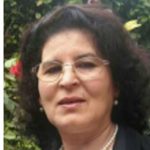 13:20 - 13:40 EET
13:20 - 13:40 EETSelected Paper - Panel 1, Session 1: Creation and Spread of Arabic-Script Manuscripts Culture in Sub-Saharan Africa
By Bahija al-Chadili Professor of African History, Faculty of Arts and Human Sciences, University of Hassan II – Casablanca, MoroccoPaper Abstract: Arabic-script manuscripts in Sub-Saharan Africa represent a huge wealth of material for studying African civilizations and culture. They are countless, spreading over a vast area. Recent catalogues of manuscripts in Sub-Saharan Africa will remain incomplete as long as many manuscripts are kept in private libraries. This paper seeks to highlight the circumstances and factors that contributed to the creation and spread of the manuscripts culture and its historical traditions, both in Arabic and local “foreign” languages in Sub-Saharan Africa, focusing on key social changes that gave rise to this big volume of writings, the need to use Arabic script to write in local languages, and the communication channels that contributed to the spread of this trend. We will look at the main historical periods that saw the rise of these writings, with focus on the nineteenth century given its big production, and examine the Hausa-speaking countries as an example, due to the spread of a variety of Arabic-script local manuscripts in them. This paper analyses the following: The key circumstances and factors that contributed to the creation of the manuscripts culture in Sub-Saharan Africa. The spread of historical traditions of Arabic and foreign manuscripts; Intellectual, social and political channels that contributed to their spread. Types of texts and their historical significance.Panel 1, Session 1: Historical Traditions of Arabic-Script Manuscripts in Africa 13:40 - 14:00 EET
13:40 - 14:00 EETSelected Paper - Panel 1, Session 1: Islamic Manuscripts and Scholarly Networks in the Senegambia and Mali
By Darya Ogorodnikova Researcher, Centre for the Study of Manuscript Cultures (CSMC), University of Hamburg – Hamburg, GermanyPaper Abstract: Until recently, the Islamic manuscripts with annotations in Soninke written in Arabic script remained unnoticed in European libraries and private collections in West Africa. The paratextual materials in these manuscripts, especially references to local intellectuals, give insights into connections between the texts, individuals, and places. A careful study of the paratexts leads to the identifications of distinct groups of manuscripts, aligning them with scholarly networks. Very often the actors of these networks are recognisable in their individual roles as teachers and students. The interplay between the local languages they used in writing point to specific methods of Islamic education that connected various ethnic groups. The paper will demonstrate how manuscript evidence can be used to reconstruct a larger picture of the Islamic learned tradition in the Senegambia and Mali of the 18th–20th centuries.Panel 1, Session 1: Historical Traditions of Arabic-Script Manuscripts in Africa- 14:00 - 15:00 EET
Discussion
- 15:00 - 16:00 EET
Break
 16:00 - 16:20 EET
16:00 - 16:20 EETKeynote Paper - Panel 1, Session 2: To Be Announced
By Anne Katrine Bang Professor of History, Department of Archaeology, History, Cultural Studies and Religion, University of Bergen – Bergen, Norway 16:20 - 16:40 EET
16:20 - 16:40 EETSelected Paper - Panel 1, Session 2: Many Musical Manuscripts: Music, Value and Materiality in Early-Modern Morocco
By Carl Davila Associate Professor, Department of History, The College at Brockport, State University of New York – New York, United StatesPaper Abstract: Close study of the song-text manuscript anthologies connected with the Andalusian music traditions of Morocco reveals some distinctive features that taken together suggest a vibrant sub-culture linking this musical tradition to prestige, erudition and other social values in late-medieval/early modern Morocco, especially in Fez. Some characteristics in common with other genres include the basic methodologies of manuscript writing (scoring and framing of the text box, and so on); the use of relatively high-quality papers; finely executed maghribī mujawhar script; and occasional annotations and corrections added as marginalia (sometimes in the original hand, sometimes not). Features that set many of these manuscripts apart from other genres include elaborate use of coloured inks, including gilt; and occasional use of decorative maghribī thuluth headings, often in several colours. The papers of these manuscripts are especially interesting, because through them we may trace the transition from old or antique laid paper to modern wove paper parallel with the technological developments in Europe, but later by some decades. Even as late as the 1930s, when printing had overwhelmed commercial book production, aficionados of the music were still having high-quality handwritten copies made of these anthologies, demonstrating the social prestige of owning and displaying such documents in the context of Arab-Moroccan culture.Panel 1, Session 2: Historical Traditions of Arabic-Script Manuscripts in Africa 16:40 - 17:00 EET
16:40 - 17:00 EETSelected Paper - Panel 1, Session 2: Reading Marks in Kufic Manuscripts and Modern Printed Qur'ans from North Africa
By Mark Muehlhaeusler Director of the Center of Excellence for the Middle East and Arab Cultures (CEMEAC), American University in Cairo – Cairo, EgyptPaper Abstract: In this paper, I propose to build on earlier research into reading marks in Qur’anic manuscripts. That research, by Dutton and others, highlights the fact that orthographic conventions (for diacritics, vowel marks, etc...) which wre used in Kufic manuscripts are markedly different from the conventions used in later manuscripts, and indeed those of modern printed editions produced in Egypt and elsewhere. There appears to be an assumption that this difference can be traced back, at least in part, to the localized practice of North Africa. The present paper looks at the survival of the conventions of Kufic manuscripts in handwritten copies of the Qur’an from Africa. In particular, I will consider the use of colored dots in texts from Morocco and Nigeria. I will argue that the remarkable survival of these orthographic features in the modern period not only serves to assert a local identity, but also to connect with a larger, ancient tradition of writing the Qur’an.Panel 1, Session 2: Historical Traditions of Arabic-Script Manuscripts in Africa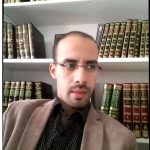 17:00 - 17:20 EET
17:00 - 17:20 EETSelected Paper - Panel 1, Session 2: Berber Manuscripts and Arabic Script in Southern Morocco: Identification or Creativity
By Wadia Agounine Researcher, Learning and Development Centre for Studies, Research and Revival of Sahara Heritage, Muhammadiyah Association of Scholars – Rabat, MoroccoPaper Abstract: Berber forms part of the culture of a number of African peoples. For example, in southern Morocco, Sous Berber is the main language of communication. Throughout history, local scholars interacted with Islamic theology and Arabic linguistics, resulting in cognitive intimacy between Berber and Arabic script and creativity in dealing with various cognitive issues, including manuscripts. The Sous people used Arabic script to write a large part of their religious and Arabic knowledge. This shows the importance of Arabic in their eyes and the emergence of knowledge production that serves it, such as Berber manuscripts that are dictionaries, codes and writings in Arabic scripts for Berber-speaking people. These are spread in several libraries in Sous. This paper will look at excellent examples of Sous manuscripts in Arabic script that tried to explain Arabic knowledge and culture, examining their characteristics and the main topics they cover, and focusing on the phenomenon of Arabic-script dictionaries.Panel 1, Session 2: Historical Traditions of Arabic-Script Manuscripts in Africa- 17:20 - 18:00 EET
Discussion
Day 2
13 September 2021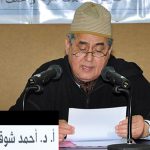 13:00 - 13:20 EET
13:00 - 13:20 EETKeynote Paper - Panel 2: A Historical, Paleographical and Codicological Review of Manuscript Books in Western Africa
By Ahmed Chaouki Binebine Director of the Royal Treasury (Bibliothèque al-Hassania) – Rabat, MoroccoPaper Abstract: The Arabic manuscript heritage is the most prolific heritage in the universe, and African manuscripts, whether in Arabic or in African dialects written with the Arabic alphabet, are considered a part of, a substitute for and a continuation of the Arabic literature in African regions. The subject matter of this paper is a historical, paleographical and codicological review. In other words, it is an overview of the genesis of these books and the evolution of their contents. Therefore, it discusses their calligraphy, its types, origins and transcription methods, and the use of the Arabic alphabet for their writing, in addition to other paleographic issues related to African calligraphy. In its essence, it touches on the used writing tools and materials such as vellum and paper, and researches the ways in which they were manufactured or imported and presents the opinions of some of the great specialists in African books such as the French orientalist Octave Houdas, 1916 AD, and the British orientalist John Hunwick, 2015 AD. Then, we pose the following question: Are these suggested readings possible? The answer will be partial, because what is available in our hands of this heritage is scarce and most of it dates back to the nineteenth century with a small part written and copied before that time. Also, because this heritage was neglected and marginalized by the natives and French orientalism which gave all the attention to the Arab heritage in North Africa. In general, this heritage is still in the stage of collection, discovery and indexing, and has not yet reached the stage of studying, drawing conclusions and making judgements, despite the efforts made by international organizations such as the UNESCO in an attempt to collect this heritage in order to write a new history for West Africa. The oral source was the dominant element in writing this heritage since the eleventh century, similar to what we see in the Tarikh Al-Fattash chronicle and the History of Sudan of Abdul-Rahman al-Sa'di, and others like Ahmad Baba al-Timbukti except for the translations of some of his contemporaries and those who preceded them especially in his two books Nayl Al-Ibtihaj and Kifayat Al-Muhtaj, which are both based on Ibin Farhoun’s Al Dibaj Al Mouthahhab, 799 Hijri. The oral source remained the basis of knowledge until the end of the twentieth century. The contemporary Malian thinker Amadou Hampâté Bâ (1901-1991) said: “When an old man dies, a library burns to the ground”. (In French: Quand un vieillard meurt c’est une bibliothèque qui brûle). The evidence for the importance of this heritage and the necessity of researching its private collections in particular is that from time to time it leads to the discovery of precious Arab works like what happened in 1999 when the Al Darouri Fi Sina’at Al Nahu of the great philosopher Ibn Rushd, 595 Hijri, was discovered after it had been lost for several centuries.Panel 2: Manuscript Libraries and Manuscript Heritage Centres in Africa 13:20 - 13:40 EET
13:20 - 13:40 EETSelected Paper - Panel 2: Arabic-Script Heritage Centres in Black Africa: Manuscripts Department, University of Dakar, Senegal: Case Study
By Djim Othman Drame Researcher and Head of the Manuscripts and Research Department, Fundamental Institute of Black Africa, Cheikh Anta Diop University – Dakar, SenegalPaper Abstract: There is no doubt that heritage is one of the most important things that should be maintained and preserved. It sometimes represents the records of a whole nation, shedding light on its history, glory and characteristics. The Islamic civilization is known to have made significant contributions to enriching human thought. Muslim scholars understood the meaning of the Quranic verse “Nun. By the pen and what they inscribe”. So they started writing and authoring books. Old explorers such as Abdallah Al-Bakri, Ibn Hawqal, Yaqut al-Hamawi, Ibn Battuta, and others, played a key role in highlighting Islamic heritage, especially in western Africa. I would like to contribute to the research on Arabic-Script Manuscripts in Black Africa by shedding light on the Manuscripts Department, Fundamental Institute of Black Africa, University of Dakar, which plays a vital role in preserving our Arab and Islamic heritage through efforts aimed at collecting, studying and publishing this heritage. This paper will cover several points, including the causes of preserving our Arab and Islamic heritage and how the French colonialism paid attention to Islamic heritage (manuscripts) in western Africa for special purposes, leading to the creation of the Fundamental Institute of Black Africa in the first half of the past century, and the establishment of the Manuscripts and Islamic Studies Department. The paper will also look at the division of manuscripts at our Department into collections, indicate their age and some famous and important works among them, look at the development and use of manuscripts after Senegal’s independence, and the problem we face in relation to preserving manuscripts. The paper will conclude by highlighting the importance of our Arabic-script manuscripts and the attention they receive from scholars.Panel 2: Manuscript Libraries and Manuscript Heritage Centres in Africa 13:40 - 14:00 EET
13:40 - 14:00 EETSelected Paper - Panel 2: The History and Importance of the Kairouan Manuscript Collection
By Jonathan Eugene Brockopp Professor, Department of History and Religion Studies, Pennsylvania State University – Pennsylvania, United StatesPaper Abstract: Soon after its founding in 670 CE, Kairouan (al-Qayrawān) became an important crossroads and scholarly center, especially well-known as the home of the early jurist Saḥnūn b. Saʿīd (d. 240/854), the local historian Abu l-ʿArab al-Tamīmī (d. 333/944), and the prolific Mālikī scholar Ibn Abī Zayd al-Qayrawānī (d. 386/996). It is not surprising to learn then, that texts from all three of these scholars are found among hundreds of manuscripts that form the library of the “ancient mosque” of Kairouan. What is astonishing, however, is the age of the manuscripts in this library. It includes a fragment of Saḥnūn’s Mudawwana that has a reader’s remark (samāʿ) from AH 235, five years before Saḥnūn’s death, and manuscripts in Abu l-ʿArab’s own handwriting. This library is, arguably, the single most important collection of early Arabic legal manuscripts in the world, containing twenty-three of the thirty oldest Islamic literary manuscripts known to exist (excluding Qur’ans). In this paper, I will briefly survey the history of this collection, both how it was constituted and how it has been studied in the past 100 years. In addition to major finds from recent scholarship, I will also highlight the work being done by Tunisian conservators to catalog and preserve this important remnant of Tunisian cultural heritage, currently housed at the National Laboratory for the Preservation of Manuscripts in Raqqada, Kairouan, Tunisia.Panel 2: Manuscript Libraries and Manuscript Heritage Centres in Africa- 14:00 - 14:40 EET
Discussion
- 14:40 - 16:00 EET
Break
 16:00 - 16:20 EET
16:00 - 16:20 EETKeynote Paper - Panel 3: The Handwritten Tradition in Africa
By Seyni Moumouni Director of the Institute of Research in the Human Sciences (I.R.S.H.) – Abdou Moumouni University of Niamey, NigerPaper Abstract: Ancient manuscripts are compiled by scholarly institutions based in various historic cities such as Timbuktu. As a sum of knowledge passed down from generation to generation, they contain valuable information and represent an essential reference source in the fields of thought, religion and the creation of social and family ties. In Africa, the written word and, even more so, manuscripts, permeate the social fabric and contribute to the construction of society's historical, cultural and educational edifice in various ways. Manuscripts inform emotions and ideas and bring individuals together. As with any handwritten tradition, that of Africa materialises the spoken word while ensuring its perpetuity; that it is preserved and communicated across time and space. Thus, in West Africa, across the immense Sahara and practically all along the Niger River, from Guinea to Nigeria, passing through Mali and Niger, from Guinea to the Atlantic Ocean, passing through Senegal and Mauritania, societies were permeated by written culture. The need to write and own manuscripts became a sign of social distinction. Teachers, pupils and scholars owned manuscripts which they transcribed or purchased for their studies. The pride of a scholar was measured by the number of manuscripts on his bookshelf. This contribution aims to trace the history of how the handwritten tradition evolved in Africa and particularly in West Africa.Panel 3: African Arabic-Script Languages 16:20 - 16:40 EET
16:20 - 16:40 EETSelected Paper - Panel 3: A Connecting Power of Grammar: Old Kanembu tafsīr and Kanuri/Kanembu poetry
By Dmitry Bondarev Head of West Africa projects, Centre for the Study of Manuscript Cultures, University of Hamburg – Hamburg, GermanyPaper Abstract: Old Kanembu, one of the earliest written languages of the Sahelian Africa, was used in the Qur’an manuscripts produced between the 17th and the early 19th centuries in the Borno Sultanate in what is now northeast Nigeria and southeast Niger. The manuscripts host dozens of Arabic tafsīr sources, testifying to a rich exegetical tradition going back many centuries. Old Kanembu survives in its modern-day offspring called Tarjumo, which is a formally acquired language used among the speakers of Kanuri and Kanembu in studying Arabic grammar and in ceremonial bilingual recitations of the Qur’an and other religious Arabic texts. Being a highly specialised linguistic code, Old Kanembu/Tarjumo is unintelligible to lay speakers and it is always dependent of the source Arabic text. However, Old Kanembu exerted influence beyond the exegetical context and there is evidence that a poetic register used for independent composition in vernacular drew on Old Kanembu grammar. This talk will look into a 19th-century manuscript with a poem written in modern Kanembu. The poem exhibits some grammatical features which are common in Old Kanembu of the Qur’an manuscripts. Why such features have not been retained in the modern-day Kanuri and Kanembu religious poetry remains an open question to which some ideas will be offered.Panel 3: African Arabic-Script Languages 16:40 - 17:00 EET
16:40 - 17:00 EETSelected Paper - Panel 3: Collecting and Digitizing Arabic and Pulaar Manuscripts from Taal Families in Senegal and Southwestern Mali.
By Mohamed Mwamzandi Assistant professor, Department of African, African American, and Diaspora Studies, University of North Carolina – Chapel Hill, North Carolina, United States, Samba Camara Assistant professor, Department of African, African American, and Diaspora Studies, University of North Carolina – Chapel Hill, North Carolina, United StatesPaper Abstract: Current studies on Islam in Senegal have focused on the political influence of the country’s four powerful Muslim brotherhoods - Qadiriyya, Tijaniyya, Muridiyya, and Laayen – on electoral outcomes and state politics. The few researches recently produced focus exclusively on Wolof Islamic literature, leaving out an important pioneering Pulaar Islamic literature whose cultural reach extends beyond national boundaries. As the first to embrace Islam in Senegal, the Haalpulaar (literally the speakers of Pulaar/Fula) have used ‘Pulaar Ajami’ (Arabic scripts used to transcribe the Pulaar language) for centuries. These texts were written by local Islamic authors affiliated with the branch of the Tijaniyya Muslim Brotherhood historically founded by Algeria-born Ahmad al- Tijani and spread in West Africa by Umar Taal (ca. 1796 - 1864) and his descendants in Senegal, Mali and Guinea. The current project aims to digitize a total of 6,000 pages of text in Senegal and Mali based on the guidelines of the British Library's Endangered Archives Programme, which funded the project. In this paper, we intend to present a brief description of about 4000 pages of the Arabic manuscripts that we have collected and digitized so far. By targeting these rare sources, the project provides access to a rare material in the hope to facilitate investigation of Islamic Africa’s intellectual contribution to world civilization, as well as the study of Islamic literatures, languages and linguistics. Furthermore, the digitized manuscripts may provide crucial information on African Islamic thought and culture, currently facing scrutiny due to the increased anti-Muslim rhetoric.Panel 3: African Arabic-Script Languages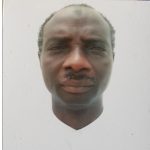 17:00 - 17:20 EET
17:00 - 17:20 EETSelected Paper - Panel 3: From the ‘Sacred’ to the ‘Profane’: the Yoruba Ajami Script and the Challenges of a Standard Orthography.
By Amidu Olalekan Sanni Professor of African and Middle Eastern Studies, Fountain University – Osogbo, NigeriaPaper Abstract: The Yoruba (southwest Nigeria) constitute the second largest ethnic group in Nigeria. The earliest evidence of the presence of Islam and literacy goes back to the 16th/17th century. The earliest history of the people, which is traced to the latter part of the 17th C, was in Yoruba language but in the Arabic script (Ajami). This makes Yoruba one of the oldest African languages with an attested history of Ajami. (Cf. Mumin & Versteegh 2014; Hofheinz 2018). However, the oldest, extant Yoruba Ajami exemplar is a 19th C Islamic verse (waka) by Badamasi Agbaji (d. 1895- Hunwick 1995). There are several items of Yoruba Ajami in poetry, personal notes, esoteric knowledge (Cf. Bang 2019), among others. Nevertheless, Yoruba Ajami remained idiosyncratic and not socially diffused, as there was no standardized orthography. The plethora of dialects, the absence of a central promotional institution, among others, are responsible. My paper will examine the efforts (Abdussalām (1992), Yūsuf (1997), Amīn (1998, 2000), Abdulhameed (2008, 2013), and ISESCO (2014f) towards the establishment of a standard Yoruba Ajami orthography for sacred and mundane usages among the locals, sufi orders, and educational institutions. It will analyse the obstacles that impeded the success of the efforts and how to overcome them. How a standard Ajami orthography can popularize the diffusion of knowledge and information in a digital scholarly and social milieu will be discussed.Panel 3: African Arabic-Script Languages- 17:20 - 18:00 EET
Discussion
Day 3
14 September 2021 13:00 - 13:20 EET
13:00 - 13:20 EETKeynote Paper - Panel 4: The Challenges of Cataloguing and the Critical Editing of Islamic Manuscripts: The Case of the Ahmed Baba Institute in Timbuktu
By Mohamed Diagayeté General Director of Ahmed Baba Institute of Higher Learning and Islamic Research – Timbuktu, MaliPaper Abstract: The Ahmed Baba Institute of Higher Learning and Islamic Research in Timbuktu (IHERI-AB) is the largest manuscript preservation centre in Sub-Saharan Africa. It hosts approximately forty thousand (40,000) manuscripts covering various fields of knowledge, notably in relation to Fiqh, Hadith, literature, history, etc. This paper will address the meaning of cataloguing; that is to say, the standardised or normalised description of manuscripts. Cataloguing is also a scientific endeavour facilitating researchers' and readers' access to manuscripts. We will note that, in order to be a good cataloguer, one must necessarily possess a very rich knowledge of Islamic culture allowing the cataloguer to authenticate manuscripts and authors, understand the types of writings - Maghrebi, Mashriqi and Sudanese - and apply any useful information that may improve the cataloguing of manuscripts. Regarding the contents of the IHER-ABT, actual cataloguing began in the nineties (90's), which allowed the publication of six (6) volumes by the Al-Furqan Foundation in London. Each volume contains 1500 titles. Other catalogues compiled with Ahmed Baba Institute materials were published locally under conditions set by donors. These works, however useful, are too limited for researchers to benefit from them. Our presentation will also describe how we approached the critical editing of Institute materials; that is to say, the authentication of manuscript texts and their publishing for easier readability in comparison to handwritten texts. We will detail the challenges faced and difficulties overcome in composing the critical edition of certain manuscripts by local authors. If the purported aim (the purpose) of the physical and electronic preservation of manuscripts is their scientific use - in other words, to edit them so as to popularise their content, because manuscripts are not museum pieces - this is one of the challenges we must overcome for the benefit of future generations.Panel 4: Cataloguing, Editing, Research and Publishing 13:20 - 13:40 EET
13:20 - 13:40 EETSelected Paper - Panel 4: Arabic-Script Berber Manuscripts in Morocco: Cataloguing and Publication
By Ahmed Saidy Co-Professor, Faculty of Theology, Ibn Zohr University – Agadir, MoroccoPaper Abstract: Cataloguing: this includes cataloguing Berber manuscripts in Morocco, analysing outputs and methods of completed catalogues, and commenting on them. Covered catalogues include the Arabic and Berber Manuscripts Catalogue of King Abdulaziz Al Saud Foundation, Casablanca (2005), the Berber Manuscripts Catalogue of the National Library in Rabat (2015), the Guidebook to Berber Manuscripts and Documents, Royal Institute of Berber Culture (2015), and the Catalogue of the Berber Manuscripts in the Library of Leiden by Nico van den BOOGERT, Leiden, (2002). Publication: due to academic and cultural reasons, the recent years saw a surge in the publication of Berber manuscripts in Morocco. Many books were edited, using contemporary methods of editing, and published in the fields of theology (Quran interpretation, Hadiths, faith, jurisprudence, Sufism, etc.), literature (poetry, travel journals, stories, proverbs, etc.), languages (dictionaries), and history (news bulletins and periodicals). The paper will shed light on these Berber publications both quantitatively, by counting and evaluating them, and qualitatively, by analysing the methods in which they were edited and studied. These manuscripts can be divided into two categories: 1) original Berber works, and 2) translated works from Arabic to Berber. The second category includes many works, and is referred to by Sous scholars in southern Morocco as “Mushallahat”, meaning works written in Sous Berber. It is to be noted that a lot needs to be done in terms of cataloguing Arabic-script Berber manuscripts in Morocco, as the catalogues mentioned above cover only a small part of Berber works, and the larger part of those works are unknown, lost or hidden in private libraries (individuals, scholar families, schools, zawiyas, etc.). In addition, in terms of editing, no guidebook or manual is available yet to guide editors on how to edit and publish these works or study their codicology. These are issues that need to be considered to come up with suitable solutions.Panel 4: Cataloguing, Editing, Research and Publishing 13:40 - 14:00 EET
13:40 - 14:00 EETSelected Paper - Panel 4: Printing Arabic Manuscripts in the Sixteenth Century: The Medici Oriental Press, from North Africa to Rome and Back
By Olga Verlato Doctoral Candidate, New York University – New York, United StatesPaper Abstract: The paper examines the history of the sixteenth-century intellectual and professional network that originated around the activities of the Medici Oriental Press in Rome. Starting in 1584, the Press financed expeditions to collect prestigious manuscript editions in North Africa, Ethiopia, and the Middle East (including al-Idrīsī’s Descriptive Geography, Ibn Sīnā’s Canon, and a series of Arabic grammars) based on their perceived aesthetic qualities and the benefits of their content. Additionally, it recruited experts from the region who would collaborate with orientalists and printers in Rome to produce books visually similar to manuscripts that were then to be sold across the Ottoman provinces. My paper reconstructs the journey of such texts and individuals, from the selection and collection of the manuscripts, through the production of Arabic type-fonts and printed editions, to the Press’ attempts to sell the final products. On an empirical level, my paper sheds light on the history of a largely unexplored transregional network of material circulation and knowledge production, uncovering a space of multilingual and multi-sited collaboration and exchange. Moreover, from a methodological perspective, I problematize the power structures involved in the Medici project. The paper thus retraces how specific notions of aesthetic and pedagogical value attached to the manuscripts affected their printed renditions, and what preconceptions there existed with regards to the taste of these works’ imagined consumers from North Africa and the Middle East, as well as of manuscript readers more generally, when confronted with such early and virtually unprecedented instances of Arabic printing.Panel 4: Cataloguing, Editing, Research and Publishing 14:00 - 14:20 EET
14:00 - 14:20 EETSelected Paper - Panel 4: HMML’s Model for Standardized Metadata of West African Manuscripts
By David Calabro Curator of Eastern Christian and Islamic Manuscripts, Hill Museum and Manuscript Library – Minnesota, United States, Paul Naylor Cataloger of West African Manuscripts, Hill Museum and Manuscript Library – Minnesota, United States, Ali Diakite Cataloger of West African Manuscripts, Hill Museum and Manuscript Library – Minnesota, United StatesPaper Abstract: The Hill Museum and Manuscript Library (HMML) hosts the world’s largest collection of digital West African manuscripts. As of January 2020, the collection includes high-resolution images of over 200,000 manuscripts and fragments from Timbuktu and the surrounding regions. While projects such as this are rapidly pushing West African scholarship into the digital age, standardized metadata is critical in making this material accessible. Names, titles, and descriptive terminology must be not only uniform but also compatible with larger information networks, including the Library of Congress and the Virtual International Authority File. A significant part of HMML’s work is to develop a reference infrastructure and authorities for West African manuscript traditions (along with other traditions that are historically underrepresented in Western scholarship) in accordance with established best practices. These tools will soon become available through vHMML Data, a major database project funded by the National Endowment for the Humanities. In this paper, we will describe the standardization practices developed by HMML, which may serve as a model for other projects on West African manuscript traditions. We will discuss three areas: (1) scripts specific to West Africa, (2) personal names, and (3) titles of works. We will illustrate our practices in these areas with examples from HMML’s database.Panel 4: Cataloguing, Editing, Research and Publishing- 14:20 - 15:00 EET
Discussion
- 15:00 - 16:00 EET
Break
 16:00 - 16:20 EET
16:00 - 16:20 EETKeynote Paper - Panel 5: Beyond Our Libraries’ Door: Cultural Heritage Preservation and Social Challenges
By Maria Luisa Russo Field Coordinator, Malian Manuscript Projects, University of Hamburg – Hamburg, GermanyPaper Abstract: Cultural heritage preservation calls for thinking beyond the limits that we usually take for granted when dealing with historical collections. While considering such activity as solely aimed at preserving the past, we tend to forget its multiple and wider meanings from a social point of view. Activities aiming at preserving the physical integrity of collections and the permanence of texts, such as preventive conservation, conservation treatments, and digital preservation, are part of a wider challenge that engages actively with education and social development. The preservation of Arabic-script manuscripts in Africa, both in their library and archive value, has to be considered from a broader perspective: this speech will address the role of individuals in charge of collections care and transmission not only from the point of view of cultural heritage preservation, but also for their implications for communities – both local and international. Preservation and conservation intertwine with digitization as part of a long-term safeguard strategy that does not look to the past, but to the future, and can actively contribute to sustainable development. The speech will address multiple meanings and challenges linked to written cultural heritage preservation, both physical and digital, and how the role of individuals in charge of collections care has to be considered “beyond the library’s door”.Panel 5: Preservation, Conservation, and Digitization 16:20 - 16:40 EET
16:20 - 16:40 EETSelected Paper - Panel 5: The Conservator as Cultural Biographer: Recovering the Life-Stories of Africa’s Manuscripts Through Conservation
By Mary Minicka Head of Preservation Section (Conservator), Western Cape Archives and Records Service, Department of Cultural Affairs and Sport, Western Cape Government – Cape Town, South AfricaPaper Abstract: In spite of strenuous efforts at digitisation of manuscript collections in Africa for preservation, the preservation of the unique materiality of Africa’s manuscript heritage remains an imperative. Tangible objects profoundly shape human society. Human beings not only create and use objects: they ascribe meaning and value to these objects – using them to define and maintain social relationships, enhance social and economic standing, represent and communicate facets of identity, amongst others. Manuscripts are part of that material world. Manuscripts as objects of human material culture bear witness to the acts of their creation, a lifespan of usage, modifications and amendment though loss and addition, and an afterlife in a repository or collection of manuscripts. The idea of a recoverable social biography of an object as suggested by Kopytoff & Appadurai (1986) can frame the use of surviving physical evidence of a lifespan of creation, consumption, exchange, retention or discarding of Africa’s manuscripts. This paper will examine the role of conservators in the preservation of tangible heritage, using the example of the South African -Malian Bilateral Timbuktu Manuscripts Project (2003 – 2009). Looking the research done to understand the challenging preservation conditions found in Timbuktu, and to understand the nature of the West African manuscripts in order to make appropriate conservation interventions. The paper will also examine the potential role of the conservator as partner in the study of manuscript culture in Africa, from their material aspects with the intention of recovering a social “life story” of African manuscripts and collections.Panel 5: Preservation, Conservation, and Digitization 16:40 - 17:00 EET
16:40 - 17:00 EETSelected Paper - Panel 5: These Pearls Should Not Perish” – Arabic Manuscript Collections in Ibadan and the Necessity for Preservation of African (Islamic) History
By Afis Ayinde Oladosu Professor, Department of Arabic and Islamic Studies, University of Ibadan – Ibadan, NigeriaPaper Abstract: In the year 2001, Baba Yunus Muhammad, ably supported by the late renowned African historian, John Hunwick, produced a catalogue of Arabic manuscript collections that were available at the University of Ibadan Library, Nigeria. According to him, the production of the catalogue had become necessary because, among other reasons, most of the collections had not enjoyed the appropriate attention of researchers they deserved. But close to two decades since the publication of Fihris Makhtūţāt Maktabat Jāmiaʻh Ibādan, the collections, unarguably one of the largest and richest in the West African sub-region continues to suffer lack of adequate attention. This paper, therefore, highlights and discusses current threats to this and other rare manuscripts, written in Arabic or Ajami scripts, in sub-Sahara Africa as a whole. It provides insight into the rich collections in the University of Ibadan library by exploring the historical and Islamic themes in Manuscript number 62/83 with the title Sirāj al-Ikhwān by Uthmān b. Muhammad b. Fūdī. The paper concludes by calling for urgent collaborations among stakeholders on the preservation and digitization of these manuscripts as a strategy for the preservation of original sources of African and Islamic histories of the medieval and early modern periods.Panel 5: Preservation, Conservation, and Digitization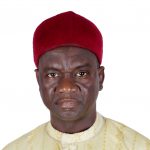 17:00 - 17:20 EET
17:00 - 17:20 EETSelected Paper - Panel 5: First Emergency Action on Preservation, Conservation and Digitization Work On The Travails of Insurgency On Arabic Manuscript Heritage: A Case Study of Bama, Gubio, Konduga and Magumeri Local Government Areas in Borno State, Nigeria
By Ahmadu Girei Hamman Academic Research Fellow, University of Maiduguri – Maiduguri, NigeriaPaper Abstract: The effect of travails of insurgency on Arabic manuscripts heritage on state like Borno is particularly of great concern. This paper is timely due to the current Boko Haram insurgency the Borno faces as a theatre of conflict, religious destroyed the larger portion of our local, state and National heritage in Arabic manuscripts in particular, which if not safeguarded by first emergency action on preservation, conservation and digitization work on Arabic Manuscript Heritage will amount to the lost of history and heritage on a world scale. The paper will examine a number of Arabic manuscripts destroyed, will proffer solution on a way forward as to how to safeguard these manuscripts from future destruction. This paper attempts to critically examine the traditional methods of preservation and conservation of Arabic manuscripts collections of some Ulama in the four local Government areas of study. Some of the manuscripts are found to be preserved in some ‘Kindai’ (grass baskets) called Adudu and some in wooden boxes, leather bags which are facing degradation problems. The paper shall discuss how the climatic condition of the area of study significantly influences the system of storing the manuscripts, also draw attention to the danger of improper storage, difficulties of preserving, conserve in the collections in the traditional setting and the benefits of allowing centres and public institutions to take custody, preserve conserve and digitalized to make them accessible to researchers and the public.Panel 5: Preservation, Conservation, and Digitization- 17:20 - 18:00 EET
Discussion
- 18:00 - 18:30 EET
Closing Remarks
Day 4
15 September 2021 10:00 - 12:00 EET
10:00 - 12:00 EETWorkshop 1: The Islamic Manuscript Tradition of East Africa: Textual Traditions and Context
By Anne Katrine Bang Professor of History, Department of Archaeology, History, Cultural Studies and Religion, University of Bergen – Bergen, NorwayThe Islamic manuscript tradition of East Africa is rich and varied and spread throughout the Swahili cultural zone, including Kenya, Tanzania, Mozambique, and the Comoro Islands. Although much research has been conducted in past two decades, the East African tradition has still received less scholarly attention than its West African counterpart. One reason is that the extant corpus is smaller, and significantly more recent, dating mainly to the 19th and 20th centuries. Another reason is that many collections remain in the ownership of families or mosques. This workshop will first present the known manuscript tradition in East Africa, mainly with reference to Kenya and Tanzania, but also the Comoro Islands and Mozambique. The intellectual influence of Yemen/Hadramawt and Oman on textual production, circulation, collection, and usage (especially in teaching) will be discussed, combined with the emergence of the Swahili literary tradition. Secondly, the workshop will present the main repositories of Islamic manuscripts in East Africa and the state of mapping/cataloguing some sites that has yet to be fully investigated. Finally, this workshop will discuss various initiatives to make collections available and the important relationship between private custodians and national institutions to maintain collections. Here, emphasis will be on the shared Islamic tradition of East Africa, alongside the shared challenges facing the actual collections. The aim is to discuss ideas about how the East African tradition can best be mapped, digitized, conserved, and studied on a regional level, taking into account the shared tradition on which it is based and which is still very present.Workshop 1: The Islamic Manuscript Tradition of East Africa: Textual Traditions and ContextWorkshops- 12:00 - 13:00 EET
Break
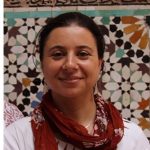 13:00 - 15:00 EET
13:00 - 15:00 EETWorkshop 2: Manuscript Collection Practices in West Africa and the Making of Archives
By Susana Molins Lliteras Associate Researcher, Archive and Public Culture Research Initiative, Historical Studies Department, University of Cape Town – Cape Town, South Africa- 15:00 - 16:00 EET
Break
 16:00 - 18:00 EET
16:00 - 18:00 EETWorkshop 3: Tarikh Zinder: Editing, Translation, and Annotations
By Seyni Moumouni Director of the Institute of Research in the Human Sciences (I.R.S.H.) – Abdou Moumouni University of Niamey, NigerAfter the publication of the history of Sinder and the interest shown in local and social history, we chose to continue our research on the same theme, this time focusing on the history of Zinder. The manuscript entitled "Tarikh Zinder" ( ضياء النيجر من تاريخ زندر ) is a manuscript written in Arabic (Tanoudi Ibn al-Boukhari Ibn al-ajal al-Timbukti al-agadassi) on the history of Zinder (Niger). This is Manuscript No. 37 of Volume 1 in the catalogue of manuscripts hosted by the Department of Arabic and Ajami Manuscripts of the Institute for Research in Human Sciences at Abdou Moumouni University in Niger. The incipit begins with a Basmala, a eulogy. Start of text: ...يا بني إن زندر في زمن قديم كان ذات أشجار و وديان و لكن سأخبرك ببدء الأمر إلى منتهاها… ، End of text: و هذا ما أنعم الله عليّ و قدر لي ما أطيق انتهى… الحمد لله رب العالمين ثم الصلاة والسلام على سيدنا محمد وآله و صحبه و سلّم. أصب الصباح ركب مصطى Histoire de Zinder explores the social history of the Zinder region in the 19th Century, in the very beginnings of colonisation, and particularly the history of the sultanate, its socio-political organisation and its relations with the other sultanates. The manuscript evokes the arrival of the French under the Cazémajou mission in charge of reconnoitring the Say-Barruwa line up to Lake Chad, and the circumstances of Cazémajou's death.Workshop 3: Tarikh Zinder: Editing, Translation, and AnnotationsWorkshops
Day 5
16 September 2021 13:00 - 15:00 EET
13:00 - 15:00 EETWorkshop 5: Preservation and Digitization Planning for Library Collections
By Maria Luisa Russo Field Coordinator, Malian Manuscript Projects, University of Hamburg – Hamburg, GermanyThe workshop will address the planning of physical and digital preservation activities and will focus on two main topics: (1) project planning, prioritization of activities and workflow, and how to find low-cost solutions for better preserving manuscript collections; (2) project planning for fundraising and providing some basic hints for outlining preservation and digitization project proposals. Participants will be actively involved in an interactive session: through preparation of a case study, attendees will have the opportunity to exchange proposals and ideas on the above mentioned topic and get feedback from the workshop leader.Workshop 5: Preservation and Digitization Planning for Library CollectionsWorkshops- 15:00 - 16:00 EET
Break
 16:00 - 18:00 EET
16:00 - 18:00 EETWorkshop 6: Proactive Planning for the Protection of Archival Heritage in Crisis: From International Law to Practice
By Emma Cunliffe Research Associate, Cultural Property Protection and Peace, Newcastle University; Secretary, UK Blue Shield; Secretariat, Blue Shield International – Newcastle, United KingdomThis workshop will begin with a brief overview of the recommendations in international law to protect cultural heritage in crisis, in particular this 1954 Hague Convention for the Protection of Cultural Property in the Event of Armed Conflict. Although designed for armed conflict, the recommendations are equally valuable in other types of crisis, such as riots and terrorism. But how do those threats differ to the more-commonly considered risks from disasters? And what does that mean in practice? Working in small groups, workshop attendees will complete a number of small exercises designed to develop awareness of the threats to archival heritage in crisis and some of the best ways to proactively mitigate them (rather than conservation, or post-disaster first aid). Workshop Aims: 1. To develop understanding of international law and its relevance to heritage protection 2. To develop understanding of the threats to heritage in crisis, particularly violence-based threats, such as riots, terrorism and conflict 3. To develop understanding of some key measures to mitigate threats and to conduct simple mitigation exercisesWorkshop 6: Proactive Planning for the Protection of Archival Heritage in Crisis: From International Law to PracticeWorkshops
- Home
- Programme
- Speakers
- Panels
- Panel 1, First Session: Historical Traditions of Arabic-Script Manuscripts in Africa
- Panel 1, Second Session: Historical Traditions of Arabic-Script Manuscripts in Africa
- Panel 2: Manuscript Libraries and Manuscript Heritage Centres in Africa
- Panel 3: African Arabic-Script Languages
- Panel 4: Cataloguing, Editing, Research, and Publishing
- Panel 5: Preservation, Conservation, and Digitization
- Workshops
- Workshop 1: The Islamic Manuscript Tradition of East Africa: Textual Traditions and Context
- Workshop 2: Manuscript Collection Practices in West Africa and the Making of Archives
- Workshop 3: Tarikh Zinder: Editing, Translation and Annotations
- Workshop 5: Preservation and Digitization Planning for Library Collections
- Workshop 6: Proactive Planning for the Protection of Archival Heritage in Crisis – From International Law to Practice
- About Us
- English
© The Islamic Manuscript Association. All rights reserved 2019.
